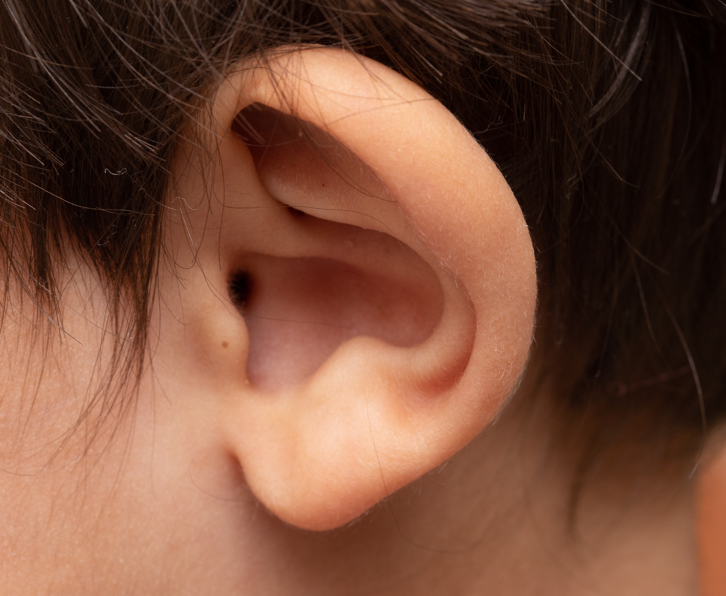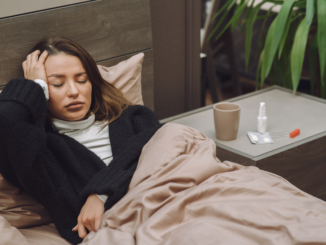
Eczema, a skin condition also known as atopic dermatitis. causes the skin to appear red and itchy. It can manifest anywhere on the body, including the external ear and ear canal.
According to the underlying cause, various types of eczema can be identified. Those with eczema will have dry, flaky skin in or around their ears.
After a person comes into contact with certain triggers, such as metal jewellery or a beauty product, symptoms manifesting as dry, flaky skin may develop.
Ear eczema can lead to acute otitis externa, an infection and inflammation of the external auditory canal.
Table of Contents
What is Ear Eczema?
When a person has ear eczema, a red, itchy rash develops on the outer portion of the ear and occasionally inside the ear canal.
Despite the fact that ear eczema can be triggered by soaps, hair dyes, and metallic jewellery, it can also occur spontaneously. This condition is known as aural eczematoid dermatitis.
Individuals prone to psoriasis or seborrheic dermatitis have an increased risk of developing aural eczematoid dermatitis.
Contact with certain irritants may also cause ear eczema, in which case the condition is known as contact dermatitis.


Ear Eczema – Signs and Symptoms
The symptoms of ear eczema are comparable to those of eczema affecting other parts of the body.
- A person with ear eczema may experience the following:
- Itchiness in or around the ear canal.
- Presence of dry, scaly skin inside the ear
- Scaly and dry skin around the ear
- The ear discharge is transparent.
- Redness and swelling in the ear area, mainly due to itching
- Extremely dry weather has the potential to aggravate the symptoms.
During the winter months and when indoor heating dries the air more than usual, a person may experience the symptoms more frequently.
Ear eczema can affect the skin of the ear canal and the area behind the ear. It may also be apparent in the fold areas between the earlobes and the face.
Sometimes, a person’s ear canal, which extends from the eardrum to the ear canal opening, can develop eczema. In the majority of cases, the symptoms are mild to moderate, but occasionally the itching becomes intense, resulting in:
- Inflamed skin that oozes, bleeds, and crusts over
- Scaly areas that are leathery or abrasive.
- Areas with extremely dry and delicate skin
- Red, dark, or swollen skin
- Skin infection within the ear canal
People with eczema should refrain from scratching the affected areas because doing so can lead to bleeding or a worsening of the symptoms.
Causes of Eczema in Ears
Researchers and physicians have not yet determined the cause of eczema, but it is believed that multiple factors play a role.
Mutation of a gene that interferes with the filaggrin protein may be one of the factors. This gene is responsible for the formation of a barrier or protective layer on an individual’s skin. The gene mutation may render the skin susceptible to infection and irritation.
Numerous people with eczema develop an overactive immune system. In response to a trigger, the individual’s immune system causes inflammation.
Triggers for eczema often are –
- Stress
- Dry skin
- Common allergens like dust and pollen
- Soaps, lotions, and perfumes with fragrances
- Soaps, detergents, and baby wipes
- Cigarette smoke
- Certain disinfectants
- Some metals in jewellery, such as nickel, can cause infections.
- Heat
- Dry winter
- Rough textiles such as wool
The cause of eczema in the ear depends on the eczema type. There are three types of eczema that can develop in the ear:
Allergic Eczema
This type of eczema is caused by a person’s exposure to irritants or allergens.
Earrings, hair products, makeup, headphones, cell phones, and other personal care products are among the irritants that may cause ear eczema.
Asteatotic Eczema
This form of eczema primarily affects the elderly.
It occurs when the skin is exposed to changing weather conditions. This form of eczema can be exacerbated by windy conditions, indoor heating, and excessive washing.
Seborrheic Eczema
This type of eczema appears on oily areas of the body, such as the scalp.
Seborrheic eczema can also affect the skin behind the ears. It may be caused by a fungus found in the oil secreted by the skin’s glands or by an immune system response, although doctors are unsure of the exact cause.
Diagnosis of Ear Eczema
A physician will diagnose ear eczema by examining the patient’s ears.
Using a flashlight, the physician may also examine the patient’s ear canals for signs of irritation.
Depending on the individual’s symptoms and medical history, a biopsy may be ordered.
A doctor takes a small sample of the patient’s skin cells from the affected area and examines it under a microscope during a biopsy.
This procedure can help the physician rule out a similar condition, such as psoriasis.
A skin test can also help determine which allergens may be responsible for eczema symptoms.\
Treatment for Ear Eczema
The treatment for ear eczema largely depends on the underlying cause and the affected area.
A person with allergic eczema must refrain from using products that may be triggering their symptoms and from wearing items such as earrings.
It is essential to determine what type of product is causing the irritation.
If the cause of the skin condition cannot be identified, an allergy test may be prescribed.
A person with seborrheic eczema affecting the ears will need to apply antifungal ointment to the affected area of the ear.
If the skin in the area behind the ear is inflamed, the doctor may prescribe a topical steroid that helps reduce inflammation.
If an individual is experiencing symptoms in the external ear canal, the physician may prescribe steroid eardrops.
Regardless of the type of ear eczema a person has, it is essential to moisturize the affected area.
A person should refrain from using harsh soaps or cleansers around their ears, as they tend to dry out the skin and exacerbate the symptoms.
A person may seek out gentle cleansers and soaps. There are cleansers and soaps designed for individuals with eczema-prone skin.
The individual should then apply moisturizing products containing colloidal oatmeal.
The colloidal oatmeal acts as a natural anti-inflammatory and has been demonstrated to soothe and protect irritated, dry skin.
In addition, as recommended by the National Eczema Association, eczema sufferers should only use products with the seal of acceptance.
These products have been tested and evaluated to ensure that they contain no known skin irritants that can exacerbate the symptoms.
If you are applying an eczema treatment product within the ear, avoid using long objects such as cotton swabs.
Eardrops for the treatment of eczema should only be used if the condition is present in the ear canal.
What are the symptoms of ear eczema?
When a person has eczema for an extended period of time, the irritation caused by scratching and the dryness can cause the skin to develop cracks, which increases the likelihood of infected eczema to develop.
Hair, earwax, and skin are likely to accumulate in the ear canal when there is an infection, resulting in hearing loss or ear infections.
You should see a doctor if you have:
- Aching pain emanating from the ear.
- Abnormal redness
- Green or yellow discharge emanating from the ear canal.
- Flu-like symptoms
An individual with infected eczema will require a combination of topical steroids and antibiotics to alleviate their symptoms.
If the condition has infected the ear canal, the treatment for ear eczema consists primarily of the application of eardrops.
Prescription medication is used to reduce the immune system’s response to triggers.
On the skin, prescription creams such as steroids, antifungal creams, and barrier creams are applied.
Additionally, biologics or medications that target the immune system’s response can be used.
Ear eczema can be treated with phototherapy, a procedure that uses a machine to direct UVB light to the affected skin area.
Home Remedies for Ear Eczema
The primary treatment for eczema is typically the use of home remedies and lifestyle modifications.
Each night, they should wash their ears with warm, but not hot, water. After a bath, apply fragrance-free moisturisers to the ear in order to lock in moisture.
Avoid any known triggers, such as jewellery, from touching their ears.
Avoid irritants that may have contributed to previous eczema flare-ups.
Wear a hat that covers the ears during cold weather, as the skin condition is likely to flare up in response to cold temperatures.
Utilize hydrocortisone-containing over-the-counter anti-itching creams to reduce swelling and itchiness.
Switch to soaps and cleansers that are gentle and recommended for sensitive skin.
Journal Citations and Authoritative References
https://www.ncbi.nlm.nih.gov/pmc/articles/PMC6166331/
https://www.uptodate.com/contents/treatment-of-atopic-dermatitis-eczema






Be the first to comment